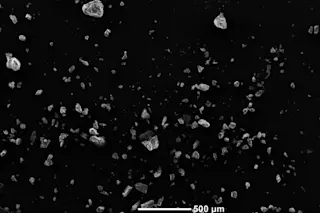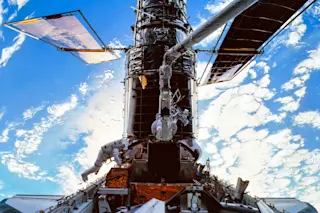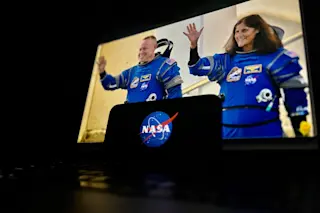There is something unsettling about an astronaut in his underpants. Here is the American hero, the icon. He inhabits the rarefied realm of popes and kings. You expect to see him in parades and CNN feed. You do not expect to see him in his Thermal Comfort Undergarment.
The ungarbed astronaut is Chris Hadfield, a 38-year-old former engineer and fighter pilot from Canada. He is standing around in his underwear because he needs help getting dressed. You would, too, were you about to don a 250-pound space suit. The suit will be worn for an underwater training session in NASA's neutral buoyancy tank, part of the Sonny Carter Training Facility at Johnson Space Center in Houston. (It contains 6.2 million gallons, so "tank" is something of an understatement. The public affairs office waxes biblical: "It took three days and three nights to fill.")
The tank, formally known as the Neutral ...














